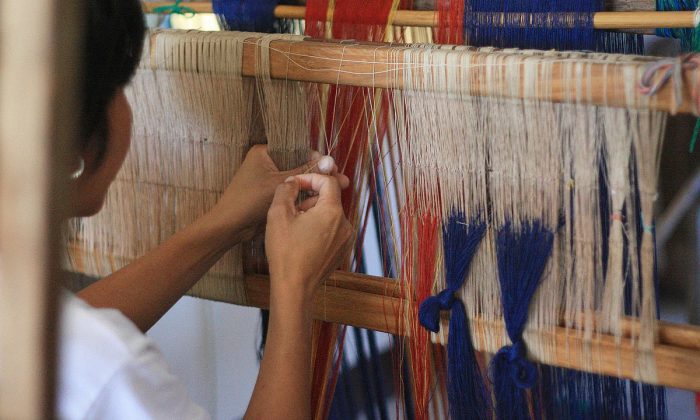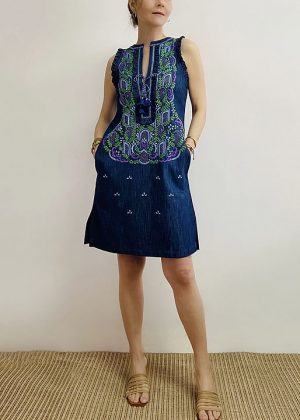WHILE fashion is an enterprise governed by economics, fashion also operates within the fields of culture, politics, and psychology by constructing beings through selling, ostensibly, looks, but also ideas and identities.
A talk titled “Clothes and Culture: Defining National Identity Through Fashion,” by exclusive members-only club Manila House, featured several fashion designers and other fashion practitioners discussed how (and even, if) national identity is woven into clothing.
The talk featured Filipino designers Rajo Laurel, Anne Marie Saguil (of Amarie), South African designer Craig Jacobs, German designer Gabriele Frantzen, Filipino entrepreneur Mons Romulo of the Katutubo Pop-Up Market, and social entrepreneur Anya Lim of Anthill Fabric Gallery.
Ms. Lim said, “I read somewhere that our ancestors considered our textiles our second skin, and I thought it was something we should celebrate.” Her Anthill Fabric Gallery utilizes indigenous Filipino textiles in modern takes. The thought that textiles themselves serve as markers of identity flavored the rest of the talk.
“In my case, that has always been my identity,” said Mr. Laurel, who has participated in fashion shows abroad as well as dressing international clients. “Fashion, from my understanding, is a lot of white noise. The only way to truly clean that white noise is to be who you are. Me, being a Filipino, that was my identity. As a designer, that was the vocabulary I chose to speak,” he said.
“If you understand who we are as a nation, as a culture, I believe that we are truly the first global citizen, because of all the people who entered our country,” he said, citing the various colonial periods and regional trade recorded over the last 500 years or so. “All of these amalgamations truly define who I am as a designer.”
Ms. Saguil, who designs embroidered resortwear said, meanwhile, “I think we all as designers just try to express ourselves… for me, embroidery just happened to be this craft that I fell in love with. That’s how I integrated it.
“I don’t think that identity is something that we really push for – we’re not waving a flag here,” she said, though she does agree with Mr. Laurel’s point. “The Philippines is my influence; it’s my aesthetic. This was where I grew up — everything. Just by virtue of that, I think that’s how our culture comes through. By virtue of being in the Philippines, of being a Filipino designer in the Philippines, your identity; your culture comes through.”
Anthill’s Ms. Lim has a special interest in indigenous textiles, a material intrinsically colored by local culture. “When you talk about design, it’s not just limited to using indigenous or handwoven Philippine textiles, right? All of us here are celebrating our talent through our way of expressing our aesthetic. That is still somewhat our identity.”
Ms. Lim’s brand takes certain precedence with the question of identity in fashion, considering that the indigenous peoples that her brand works with also struggle with notions of identity in an increasingly modern world. “When we design for identity, we also take into consideration not just those who will wear our [products], but also the weavers, who themselves have a poverty of identity.” She cites the lack of interest younger members of these indigenous groups have to weave, with several desiring to migrate.
“If we want to continue or grow the movement of younger Filipinos… taking pride in our local design, we need to be innovative and be open to combining commercial fabrics with indigenous fabrics,” said Ms. Lim.
Ms. Romulo, founder of Katutubo, which supports local designers and indigenous creators, said, “We have to support our weavers, our heritage our culture… at the same time, we have to celebrate our designers who are there making beautiful clothes.” She notes that sometimes, fabrics have to be sourced abroad due to local limitations on manufacturing (indigenous fabric or otherwise).
“Then again, it’s a Filipino culture and intelligence that comes in when they design certain clothing. That alone is a celebration of culture.” — J.L. Garcia







